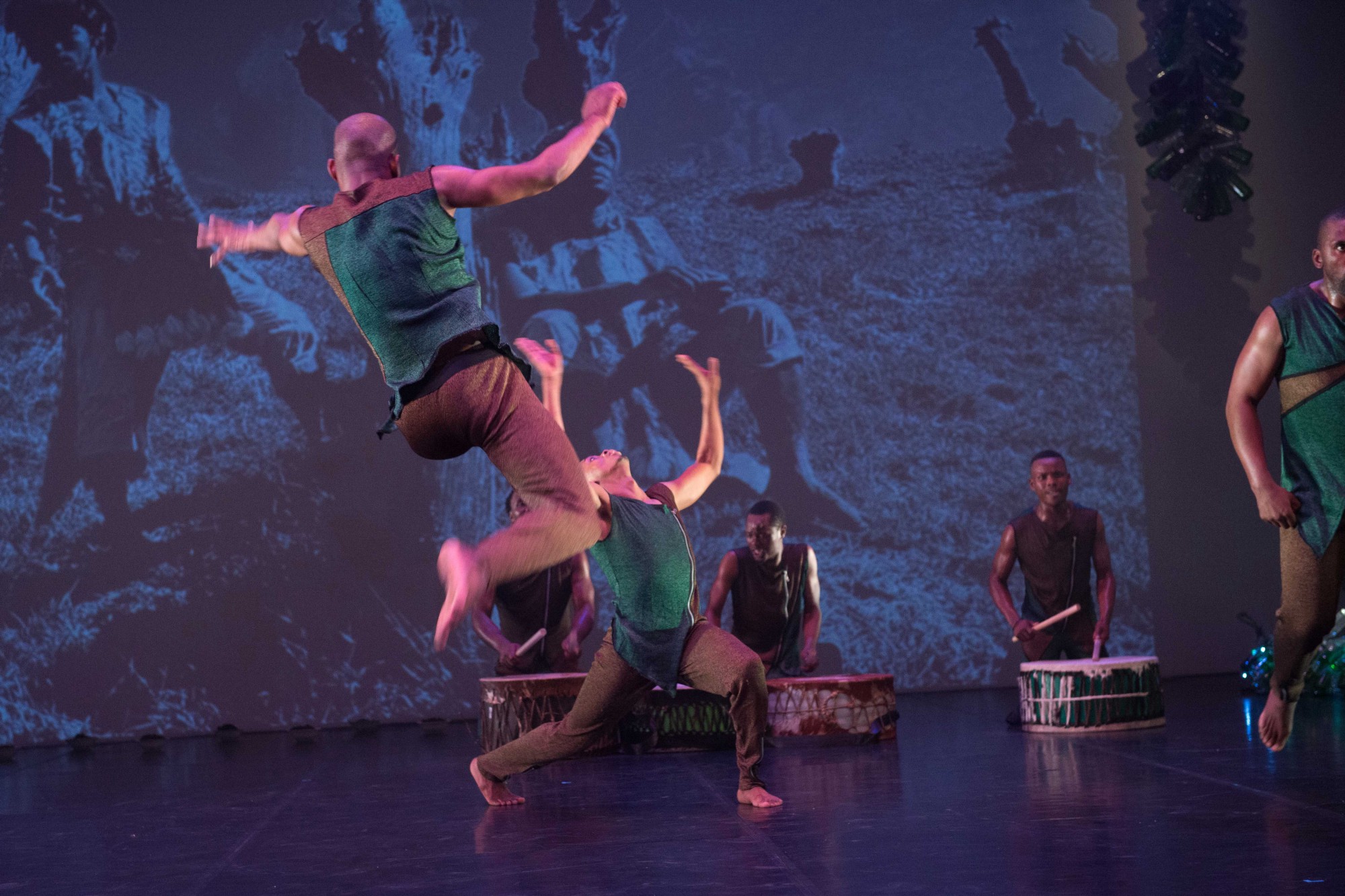*Note this review originally appeared on the JOMBA! Khuluma Blog, as part of the JOMBA! Contemporary Dance Experience Dance Writing Residency and is re-published with permission.
DURBAN, KZN, SOUTH AFRICA — In the opening tableau of Musa Hlatshwayo’s “Udodana,” Hlatshwayo revolves around himself at mid-stage. A hooded figure, made moody by top light with gobos, Hlatshwayo carries a legless chair on his back, two bottles and some fruit secured on its seat. Buckets of arum lilies, a bouquet of which Hlatshwayo holds in his arms, adorn the right and left sides of the Elizabeth Sneddon’s stage, while the top and bottom of the performance space contain bowls — which we eventually discover are full of manure. A video plays behind him (by Simanga Zondo), with a loop of images depicting men in traditional Zulu dress arriving at a broken-down church.
For one-night only as part of the mainstage series at this year’s JOMBA! Contemporary Dance Experience, “Udodana” features Hlatshwayo and his company of eight men, who operate under the name Mhayise Productions. As Hlatshwayo continues to pivot, the company makes its way onstage, and we learn that a tinkling sound has been coming from marbles rolling around in glass bottles held by all — the same kind which are affixed to their matching backpacks and make up four gorgeous bottle chandeliers hanging above the stage. Each man lines up, extends his bottle from his groin, and waves it around like a phallus. “Udodana,” it seems, is about manhood.
As the dancing begins in earnest, all but Hlatshwayo strip off their packs and hooded jackets, making way for an astounding series of duets performed in sharp boxes of light onstage. Meant to contain them, these boxes aren’t hardly big enough for the explosive partnering and floor work that dips them in and out of the light.
Hlatshwayo mostly continues as before, slowly dropping his bottle from atop his head to his groin and revolving in place as his dancers weave circles around him, taking turns at a line of drums played just off the lip of the stage.
As he makes his way downstage, he rests his bouquet of lilies just beside a splat of cow dung. It’s the same place onstage where he’ll end the piece an hour later, with a soliloquy about the death of his father, spoken as four dancers smear dung on their faces and bodies. It’s a powerful epilogue which clearly outlines the meaning of all the symbolism onstage, therefore diminishing the potency of ambiguity. Sometimes, there is beauty in not knowing.
“Udodana” is a sensory feast, employing eyes, ears, and even noses in locating us exactly where Hlatshwayo wants us to be, offering a personal story rooted in a history that is his alone. In so doing, he lays too many cards on the table, muddying the message by, mid-way through, decentralizing his role to join the rest of the cast for a few passages of dancing. Visibly heavy bottle chandeliers with strings of twinkle lights inside them are draped across his and another’s shoulders just once, and then discarded, relegated to sit in the upstage corners. The work is begging not for minimalism, but compositional restraint, to give his props and ideas time to fully marinate and give each its due.
Hlatshwayo’s exploration of his black male identity joins an overarching investigation of masculinity at this year’s JOMBA!; he opens a window to his own struggle with affirming his place in the world and coping within a society that continues to permit toxic masculinity. In so doing, he wrestles with larger socio-political themes such as land rights (evidenced through his use of a divisive speech by Julius Malema) and Zulu traditions which locate his work firmly in South Africa, but, most certainly, “Udodana” resonates across cultures and lands.
Header photo: Musa Hlatshwayo’s “Udodana” at JOMBA! 2018. Photography by Val Adamson.
